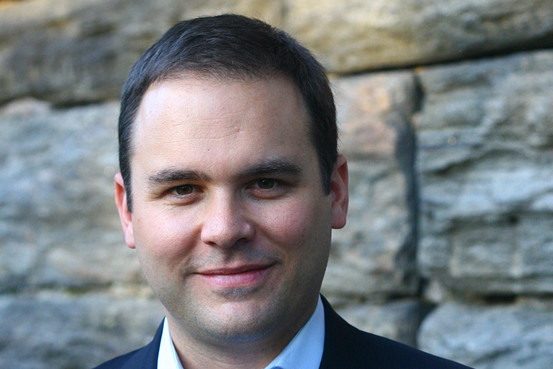It’s hardly news anymore when companies invest in lavish and quirky perks—from $10,000 furniture budgets to fancy cooking classes—but one surprising benefit has taken hold in corporations across the country: mindfulness training.
Once seen as a quasi-spiritual, New Age practice, mindfulness has been repackaged as a secular therapy that businesses are eager to promote to their employees. That’s what reporter David Gelles argues in his new book, “Mindful at Work,” published last week.
Gelles recently spoke with At Work about the rise of mindfulness at work, whether the practice is compatible with the culture of business, and what’s next for the trend. Edited excerpts:
WSJ: How did mindfulness enter the corporate workplace? Was there a tipping point, so to speak, and why are we seeing it grow in popularity?
David Gelles: There have been early examples of companies trying to experiment with mindfulness—Monsanto Co. was one of them, but it didn’t really stick. It’s really been in the last five or so years that companies—led by General Mills Inc.GIS +0.54%, Aetna Inc.AET +0.24%, maybe Google Inc.GOOGL -0.15%—have really started to take these programs and scale them in a lasting and enduring way. There hasn’t been any sort of coordinated effort either, it was all independent of each other.
There are a few reasons for why they became popular now. First is that, unlike 10 years ago, we now really have an enormous body of research that points to the practical and measurable benefits of mindfulness practice–study after study shows that mindfulness in fact makes people less stressed, more productive and maybe even healthier, and maybe even happier too. It’s backed by a lot of science.

The second reason is that across the country there’s a loosening up of social mores right now and things like yoga and meditation just are not as foreign or as taboo as they once were. Yoga has become extremely popular. This is maybe one reason that mindfulness is particularly popular in places like Silicon Valley, but you even see happening here on Wall Street. Goldman Sachs Group Inc.GS +1.21%, Blackrock Inc.BLK +0.49%, Bank of America BAC +0.64% have all started their own programs.
And finally, the pace of our workdays and our reliance on this always-on culture has made mindfulness more needed than ever before. The degree to which everyone is so hyperconnected and so addicted to their smartphones and email has gotten many people to a place where mindfulness is a really welcome antidote to this incessant communications culture.
WSJ: So many business leaders believe that to be really successful you need to always be focused on earnings, which might be contrary to mindfulness, which tells you not to fixate on any one thing. How do you square mindfulness with the profit motive?
Gelles: Mindfulness doesn’t ask that we not make money and it doesn’t ask that we renounce capitalism. All mindfulness is doing is trying to get us more attuned to the thoughts, emotions, and sensations that we’re experiencing. Now, people have reported that their mindfulness practice made them more sensitive to things like environmental concerns and the conditions of factory workers.
If those feelings in turn result in decisions that are put people ahead of profits and puts sustainability ahead of EPS in a particular quarter, that creates some real tension. Private companies are better equipped to deal with some of those tensions than public companies. Public companies of course have public shareholders who are looking for quarterly growth, and if a CEO is to say that we’re going to forego profits because I had an epiphany on my mindfulness retreat, that could be a tough sell to investors.
I think the real counterargument is that there are monetary gains [with mindfulness]. For example, when Aetna rolled out its big mindfulness program, after the first full year, they saw out-of-pocket healthcare costs go down. In other words, they found cost-savings to introducing these programs. It wasn’t a drag on the bottom line, it was a boost to it.
WSJ: In the programs that you’ve attended, are there specific types of meditation being practiced? How much are the programs tying meditation back to the company and the person’s job?
Gelles: There’s a whole line of thinking called Mindful Leadership, which really encourages executives and team leaders to develop some of these qualities. And rarely did I see people being instructed to try to bring the company into the training, in a “how mindfulness will help you at Google” sort of way. It was more general than that.
There’s a whole range of different ways that mindfulness is being taught. At Google, they’re really bringing emotional Intel INTC -0.22%ligence and mindfulness together under the “Search Inside Yourself.” At Aetna, they’re using video conference training to teach very pure mindfulness inspired by Jon Kabat-Zinn. At places like Intel Corp. and Adobe Systems Inc.ADBE +1.18%, they’re creating really home-grown programs, developed by longtime meditation practitioners who happen to work at those companies who are bringing their own variations.
WSJ: Now that the trend seems to be fairly established, what’s next?
Gelles: Employees are hungry for this stuff, because the pace at which we’re working, it’s driving people into the ground and any breath of fresh air is really, really welcomed. My hope is that companies really invest some time in training and measuring the work that they’re doing. At Aetna, we’re seeing some initial results but I think the more formalized and more closely studied these programs become, the more opportunity there will be for others to really seize on the empirical data
